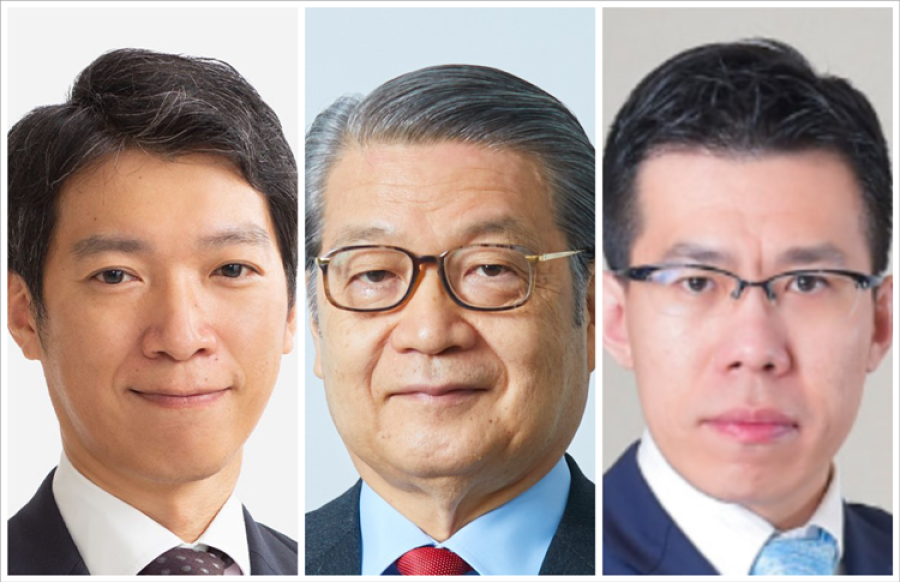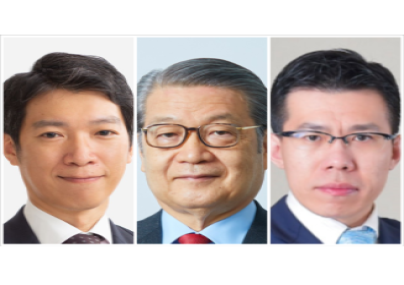
COVID-19 brought cross-border M&A involving Japan to a temporary standstill, but the momentum is coming back as the impact of the pandemic lessens. Three lawyers offer their insights.
WHAT DO YOU EXPECT JAPANíS CROSS-BORDER M&A FOR THE NEXT 3-5 YEARS IN TERMS OF INDUSTRY, NUMBER AND PRICES? WHAT WILL BE THE DRIVING FORCE OF IT?
|
Akifusa Takada
|
The year 2021 was an active one for M&A, especially domestic deals. However, after the pandemic, we expect to see M&As of such significance that they could alter the socio-economic map 10 to 20 years from now. New types of M&A will emerge, typified by the adoption and utilization of strategic spin-outs and carve-outs, and SPACs (special purpose acquisition companies). While there are concerns about geopolitical risks in 2022, we expect continued growth in the health tech sector ó whose rapid evolution has been spurred by the COVID-19 pandemic ó and fields related to Sustainable Development Goals (SDGs) scheduled to be achieved by 2030. As for M&A in Japan, while we need to keep an eye on developments related to the Foreign Exchange and Foreign Trade Act and geo-economic security, we have the sense that the Japanese market is drawing attention from all over the world as an environment in which overseas players, including global PE (private equity), can participate on an equal footing. |
|
Shin Ushijima
|
The amount of cross-border M&A has been on the rise since 2011 and is expected to continue rising. Although 2020 saw a decline in M&A due to the COVID-19 pandemic, 2021 exceeded 2019 levels and reached a record high. This came as buyers thought diversifying management for risk dispersal and embarking on new ventures amid the unprecedented disaster of the pandemic was a good fit for the needs of sellers who had to secure funds amid COVID-induced poor performance. In addition, there are a series of measures such as the Corporate Governance Code that call for review of business portfolios as well as business restructuring to meet prime market requirements (market capitalisation of tradable shares and ratio of tradable shares), so this situation is expected to continue. Having said that, the total transaction value for M&A is down from 2019. This is because of tightened restrictions on foreign investment by countries such as the United States and European nations who are worried that falling stock prices due to the pandemic will result in foreign investors acquiring companies that are important in terms of security interests. Despite that, ASEAN countries are deregulating foreign currency restrictions to attract foreign capital, and it is expected that M&A by Japanese companies targeting Southeast Asian countries will increase. Against the background is a declining Japanese domestic market. Southeast Asian countries, which are seeing continued growth in both economy and population, seem to be more and more attractive for Japanese companies not only as the inexpensive manufacturing bases they have been up to now, but also as consumer markets to expand into. These trends are likely to continue in the future. It is therefore expected that large-scale M&A from Japan into developed countries will continue to decrease, while relatively small-scale M&A targeting developing countries will keep increasing. This will result in an overall rise in the number of M&As, but not in terms of transaction amount. |
|
Yan Sun
|
Since 2020, cross-border M&A between Japan and China has been hit hard by the one-two punch of the COVID-19 pandemic and conflict between the U.S. and China, slowing its momentum. However, Japanese companiesí investment in China has not been halted despite repeated ups and downs ñ although the method of calculation such as the number of projects and the amount of investment differs depending on interpretation ñ and publicly available statistical data shows that Chinese companiesí investment in Japan is, in fact, expanding rather steadily. The Chinese companies targeted for acquisition by Japanese companies are shifting from the traditional manufacturing industry to new fields such as new energy, pharmaceuticals, nursing and medical services. On the other hand, the Japanese companies targeted for acquisition by Chinese companies are expanding to software and cultural industries such as comics and games, while maintaining the existing focus on real estate and manufacturing of electrical equipment, machinery, and so forth. This is being driven by various factors such as expanding needs due to changes in Chinaís industrial structure, promotion of the ìGoing Outî (i.e., overseas expansion) strategy for Chinese companies, growth of investment funds within China, and the slowing economic growth. But in any case, once the impact of COVID-19 abates, we can expect to see further growth in investment in Japan by Chinese companies. |
パンデミック後のM&A回復
コロナウイルス感染症の拡大により、日本が絡むクロスボーダーM&Aは一時的に停滞したが、パンデミックの影響が引くにつれて、勢いを盛り返しつつある。経験豊かな弁護士3人に話を聞いた。
日本が絡むクロスボーダーM&Aの動向は、産業、件数、価格において、今後3-5年程度でどうなると見ておられますか。また、そうしたクロスボーダーM&Aを推進する要因は何でしょうか。
|
ベーカー&マッケンジ |
2021年は国内を中心としたM&A活動が活発になりましたが、コロナ後は、10-20年先の社会経済を見据えた、トランスフォメーショナルなM&Aに期待しています。企業の戦略的な会社分割やカーブアウト(事業の一部切り出し)、SPAC(特別買収目的会社)の導入・活用に代表される、新しい形のM&Aという流れが出てくると感じています。2022年に入り地政学リスクが懸念される一方で、コロナにより拍車がかかり急速に進化を遂げるヘルステックや、2030年の達成に向けた持続可能な開発目標(SDGs)おける関連分野などは引き続き伸びていくと見ています。 日本におけるM&Aという点では、外為法や経済安全保障等の動向に留意は必要ですが、海外のプレーヤーが同じ土俵で参加できる環境が整ってきており、グローバルPE(プライベート・エクイティ=未公開企業)をはじめ、日本のマーケットが多角的に世界から注目されていると感じています。 |
|
牛島総合法律事務所
|
クロスボーダーM&Aの件数は、2011年来増加傾向にあり、今後も増加していくものと思われます。この点、M&Aの件数は、2020年には新型コロナウイルス流行の影響を受けて減少しましたが、2021年には2019年を上回り過去最多となりました。これは、いわゆるコロナ禍という未曽有の事態のなかで、リスク分散のための経営の多角化、新規事業の開始といった買い手側の考えと、業績不振のために資金の確保を必要とした売り手側のニーズとが合致した結果と思われます。また、事業ポートフォリオの見直しを求めるコーポレートガバナンス・コード等の一連の施策や、プライム市場の条件(流通株式時価総額や流通株式比率)を達成するための事業再編などもあり、この状況は続くと思われます。 ただし、M&Aに関する取引金額は2019年よりも減少しています。新型コロナウイルスの流行による株価下落等の結果として、安全保障上重要な企業を外国投資家に買収されることを恐れた欧米等の各国が外資規制を強化しているためです。もっとも、ASEAN諸国は外資誘致に向け外貨規制の緩和を進めており、日本企業による東南アジア諸国を対象とするM&Aが増加すると思われます。背景にあるのは国内市場の衰退で、経済、人口共に成長を続ける東南アジア諸国は、日本企業にとってこれまでのような安価な製造拠点としての役割だけでなく、消費市場としての役割を果たす進出先として魅力が高まっているようです。 この傾向は今後も続くように思われます。そのため、今後も、日本から先進国への大規模なM&Aは減少し、途上国を対象とした比較的小規模のM&Aは増加すると予想されます。その結果、M&Aの件数は増加するものの、その金額は増加しないものと考えられます。 |
|
中倫律師事務所、
|
2020年以後、新型コロナウイルスの流行と米中対立のダブルパンチにより、日中間のクロスボーダーM&Aは大きな打撃を受け、その勢いは鈍化しているのが現状です。しかし、日本企業の対中投資は(プロジェクト数や投資金額等の見方により数値の出し方は異なるものの)、増減を繰り返しつつも動きは止まっておらず、中国企業の対日投資は、むしろ右肩上がりで拡大しているのが、公的な統計データからも見て取れます。 日本企業による中国企業の買収対象は、従来の製造業から、新エネルギー、医薬品、介護や医療サービス等の新規分野にシフトしています。一方、中国企業による日本企業の買収対象は、これまでの不動産や電気設備、機械器具等の製造業を中心にしつつ、ソフトウェアや漫画・ゲーム等の |





